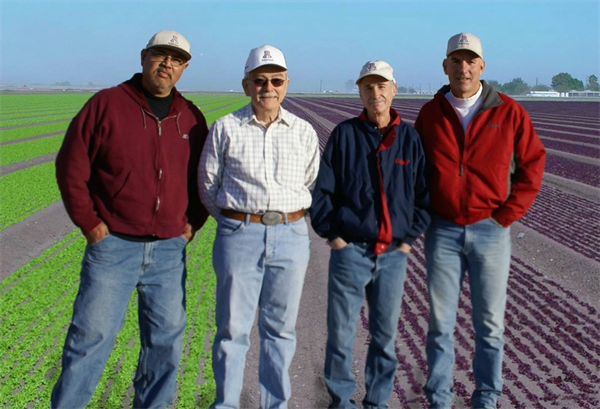-
Jul 10, 2024Insecticide Usage on Conventional and Organic Lettuce, 2023-24
We recently compiled the surveys from our annual Lettuce Insect Losses Workshop and results continue to show interesting trends in insecticide usage on desert lettuce. In general, the most used insecticides in fall and spring lettuce correspond directly to the key pests that typically occur during these growing periods. Overall, the pyrethroids applied both as foliar sprays and through chemigation at stand establishment were the most used insecticide class in conventional lettuce production. No surprise there. Over the past 20 years, pyrethroid usage has remained steady and the reason is quite clear; pyrethroids are the most inexpensive and safe broad-spectrum insecticides available for effective control of beetles, crickets, plant bugs, and some Lepidopterous larvae and adults (cabbage looper and corn earworm). The overall use of OPs and carbamates decreased this season. Methomyl (Lannate) and acephate usage declined by more than 20% compared to 2023 and was lower this year than the previous 5 years. In the past few years, OPs/carbamates have been increasingly replaced by several reduced-risk chemistries, of which the spinosyns are the most used class of selective insecticides. Radiant usage against both lepidopterous larvae and thrips has remained steady over the past 20 years, averaging about 2.5 sprays per treated acre, and remained high in 2023-24. The Diamides (Coragen, Besiege, Minecto Pro, Exirel, Verimark, and Harvanta) were another commonly used selective chemistry in lettuce this season. Since they were first registered in 2008, PCAs have steadily incorporated this new chemical class into their management programs and were used on > 80% of the fall lettuce over the past 4 seasons. Among the diamides, Besiege, Harvanta, and Minecto Pro were the most used products. Another important class of chemistry used in fall and spring lettuce are the neonicotinoids (the 3rd most used chemistry in lettuce in 2022-23) driven primarily by soil-applied imidacloprid for whiteflies and aphids. The usage of imidacloprid on both fall and spring lettuce decreased in 2023*24, treated on ~70% of the acreage. Foliar neonicotinoid usage decreased last season on both fall and spring acres. However, Movento was applied on almost 90% of spring acres in 2024 and was the most used product for sucking insect control due to heavy aphid pressure that occurred this season. Sequoia, Sivanto, Beleaf and Versys accounted for significant usage this spring, again due to aphids. Torac usage was down last spring for thrips management and was used on less than 2% of the acreage. In organic lettuce, Entrust was the most commonly applied biopesticide. Like Radiant, it was applied more than two times on >95% of the fall and spring acres. Bts, Pyganic and azadirachtin/neem oil products were the next most used biopesticides on organic crops. Finally, among all insecticide chemistries, the broad spectrum, consumer–friendly pyrethroids have been the predominant chemistry applied to lettuce. However, for the past 12 seasons PCAs treated a greater percentage of their lettuce acreage with selective, reduced-risk products than with the broad-spectrum chemistries. To view the report of the estimated insecticide usage by chemical class, as well as the most used insecticides on fall and spring lettuce this past growing season, go to this link: Insecticide Usage on Conventional and Organic Lettuce in the Desert, 2023-2024
 To contact John Palumbo go to: jpalumbo@ag.Arizona.edu
To contact John Palumbo go to: jpalumbo@ag.Arizona.edu











